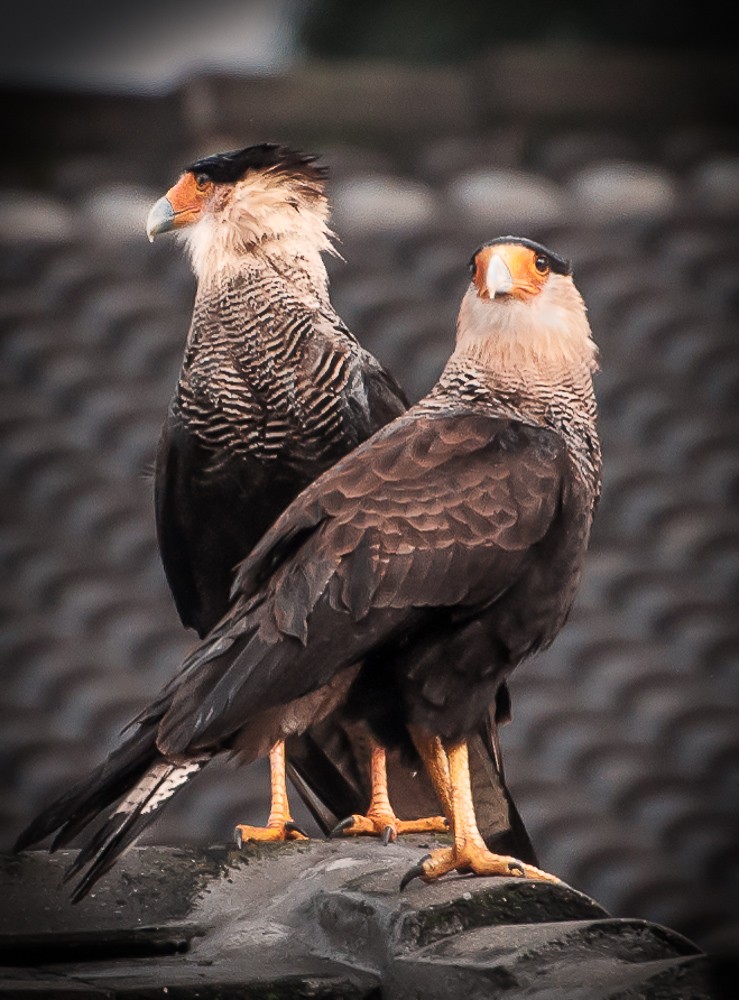Crested Caracara
A species of Crested Caracaras, Also known as Southern Caracara Scientific name : Caracara plancus Genus : Crested Caracaras
Crested Caracara, A species of Crested Caracaras
Also known as:
Southern Caracara
Botanical name: Caracara plancus
Genus: Crested Caracaras
Content
Description General Info
 Photo By Guilherme Zambrana Toledo , used under CC-BY-SA-3.0 /Cropped and compressed from original
Photo By Guilherme Zambrana Toledo , used under CC-BY-SA-3.0 /Cropped and compressed from original Description
It has a total length of 50–65 cm (20–26 in) and a wingspan of 120–132 cm (47–52 in). Weight is 0.9-1.6 kg (2-3.5 lbs), averaging 1,348 g (2.972 lb) in 7 birds from Tierra del Fuego. Individuals from the colder southern part of its range average larger than those from tropical regions (as predicted by Bergmann's rule) and are the largest type of caracara. In fact, they are the second largest species of falcon in the world by mean body mass, second only to the gyrfalcon. The cap, belly, thighs, most of the wings and tail-tip are dark brownish, the auriculars, throat and nape are whitish-buff, and the chest, neck, mantle, back, uppertail-coverts, crissum (the undertail coverts surrounding the cloaca) and basal part of the tail are whitish-buff barred dark brownish. In flight, the outer primaries show a large conspicuous whitish-buff patch ('window'), as in several other species of caracaras. The legs are yellow and the bare facial skin and cere are deep yellow to reddish-orange. Juveniles resemble adults, but are paler, with streaking on the chest, neck and back, grey legs, and whitish, later pinkish-purple, facial skin and cere. It can be separated from the similar northern caracara by its more extensive barring on the chest, brownish and often lightly mottled/barred scapulars (all blackish in northern), and pale lower back with dark barring (uniform blackish in northern). Individuals showing intermediate features are known from the small area of contact in north-central Brazil, but intergradation between the two species is generally limited. 
Size
59 cm
Colors
Brown
Black
Yellow
Bronze
Gray
White
Life Expectancy
38 years
Nest Placement
Tree
Clutch Size
1 - 4 eggs
Incubation Period
1 - 2 broods
Number of Broods
30 - 33 days
Nestling Period
42 - 56 days
Feeding Habits
Crested Caracara predominantly consume carrion but are omnivorous, feeding on insects, fish, reptiles, amphibians, birds, mammals, and occasionally fruit. They forage by wading, digging, and displacing debris, exploiting disturbances like fires or farming to feed on live or dead prey. They depend on other predators to access large carcasses and are known to scavenge at dumps, sometimes outcompeting vultures.
Habitat
Crested Caracara's typical habitat encompasses diverse open or semi-open landscapes, including grasslands, deserts, rangelands, and scrub territories, extending from sea level to altitudes up to 10,000 feet. This species readily adapts to human-altered environments, often seen near farmlands, dumps, or slaughterhouses. Crested Caracara steer clear of dense forests like the Amazon, with a preference for open areas along rivers, and the high Andean terrain is generally avoided. They require habitats with sparse ground cover to facilitate their running takeoffs for flight.
Nest Behavior
Both male and female crested Caracara participate in nest building for 2 to 4 weeks. They are known to reuse and enlarge existing nests over time. They exhibit a cooperative approach in parenting, sharing the duties of incubation and care for the young.
Nest Characteristics
Crested Caracara constructs a sizable, bulky nest in the tallest available tree, cactus, or shrub, using stems, twigs, and vines woven into a structure with a shallow bowl, typically around 2 feet across, often refurbishing old nests.
Dite type
Omnivorous
General Info
Feeding Habits
Bird food type
Behavior
Crested Caracara exhibit a unique blend of terrestrial and aerial habits. Typically, they walk or run with determination on the ground, initiating flight with a brief sprint before ascending with deliberate, powerful wingbeats. Crested Caracara display territorial fidelity, maintaining established perimeters with their partners year-round. These pair bonds are enduring, often lasting several years, and are characterized by mutual preening. Although somewhat solitary, crested Caracara exhibit a degree of social flexibility, ranging from aggressive exclusivity at food sources during breeding to occasional communal roosting. Remarkably, they demonstrate site fidelity for nesting, often returning to the same location annually.
Distribution Area
The southern crested caracara occurs from Tierra del Fuego in southernmost South America north to the Amazon River region and southern Peru. An isolated population occurs on the Falkland Islands. It avoids the Andean highlands and dense humid forest, such as the Amazon rainforest, where it is largely restricted to relatively open sections along major rivers. Otherwise, it occurs in virtually any open or semi-open habitat and is often found near humans. 
Species Status
Not globally threatened.
Scientific Classification
Phylum
Chordates Class
Birds Order
Diurnal Birds of Prey Family
Falcons and caracaras Genus
Crested Caracaras Species
Crested Caracara